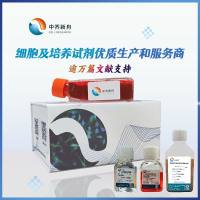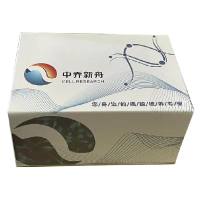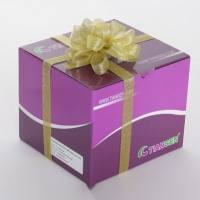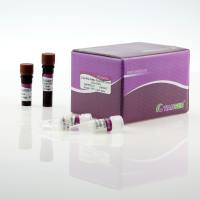Disruption by Fusion PCR
互联网
1) In separate PCR reactions, amplify the 5' and 3' ends of the gene of interest with primers about 200 bases apart. Primer 2 should begin with 24 nts complementary to the M13 forward primer(GTC GTG ACT GGG AAA ACC CTG GCG) and primer 3 should begin with 24 nts complementary to the m13 reverse primer (TCC TGT GTG AAA TTG TTA TCC GCT). PCR amplify the marker using the m13 forward and reverse primers. The Prakash and Jones vectors are useful for the marker PCR. The conditions for these PCR reactions are as follows:
20ng Plasmid template DNA
5ul 5uM Primer1/ m13 forward/ Primer3
5ul 5um Primer2/ m13 reverse/ Primer 4
5ul 10xVent Buffer
5ul 2mM dNTPs
1ul Vent
H2O to 50ul
10X Vent Buffer:
0.2M TRIS pH 8.8
0.1M KCl
0.1M (NH4)2SO4
0.02M MgSO4
1% Triton X-100
Do 94℃x4 min. then 30 cycles of: (94℃x1min. then 55℃x1min. then 72℃ for 3min) finish with 72℃x20min and a 4℃ soak.
2) Gel purify all the PCR fragments on low melt agarose.
3) Set up the first fusion PCR by melting the 5' end fragment and marker fragment at 65℃ and adding to a PCR reaction as follows:
2.5ul of each fragment
5ul 5uM Primer1
5ul 5uM m13 reverse primer
5ul 10xTaq Buffer
5ul 2mM dNTPs
1ul Taq
H2O to 50ul
10X TAQ Buffer:
0.2M TRIS pH8.3
15mM MgCl2
0.25M KCl
0.5% Tween20
Do 94℃x4 min. then 30 cycles of: (94℃x1min. then 55℃x1min. then 72℃ for 3min) finish with 72℃x20min and a 4¡C soak.
4) Gel purify the product of the first fusion PCR on low melt agarose.
5) Set up the second fusion PCR by melting the product of the first fusion PCR and the 3' end fragments at 65¡C and adding to a PCR reaction as follows:
5ul of each fragment
10ul 5uM Primer1
10ul 5um Primer4
10ul 10xTaq Buffer
10ul 2mM dNTPs
2ul Taq
H2O to 100ul
Do 94℃x4 min. then 30 cycles of: (94℃x1min. then 55℃x1min. then 72℃ for 3min) finish with 72℃x20min and a 4℃soak.
6) Check for product on a mini gel. Phenol/chloroform extract the product and EtOH pptate and use directly to transform a diploid or gel purify the product and transform the diploid with this DNA.
Note: If PCR generated errors are of concern then each PCR generated fragment can be extracted from the low melt agarose and EtOH precipitated. Once free of the agarose, Vent should work in the fusion PCR reactions.









